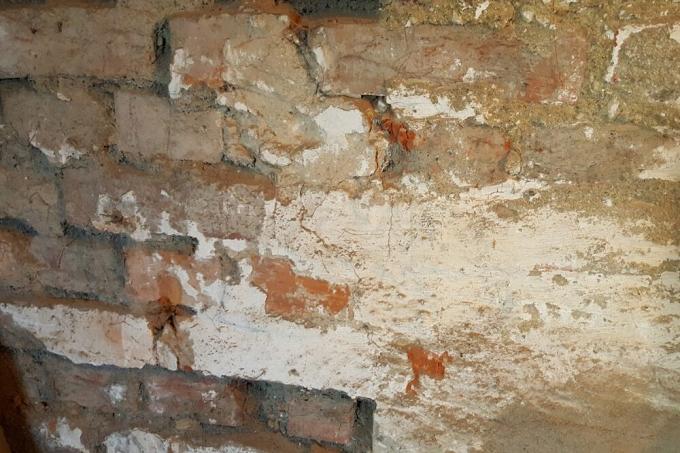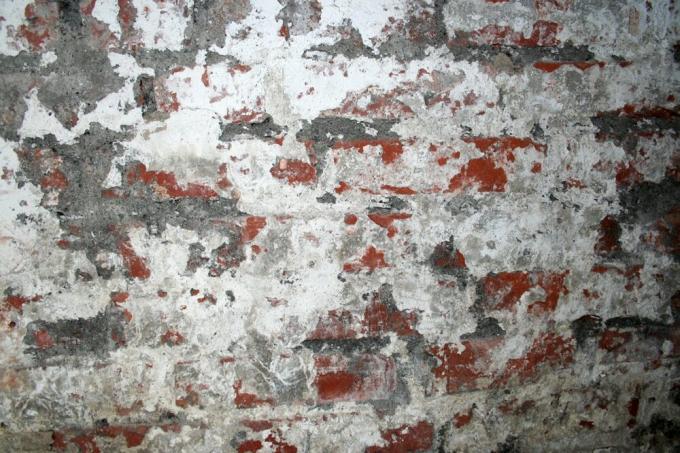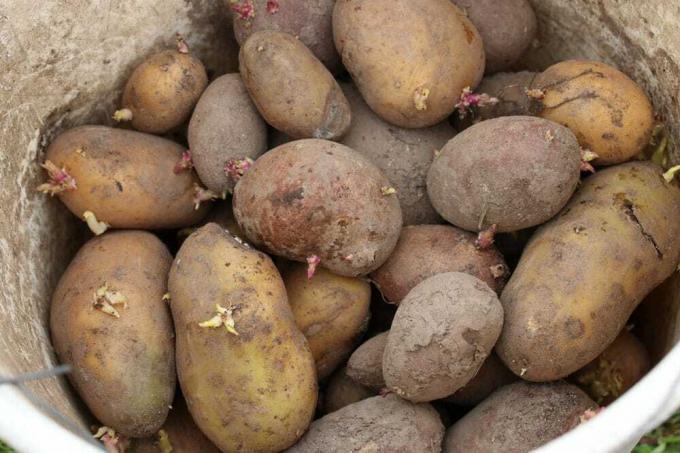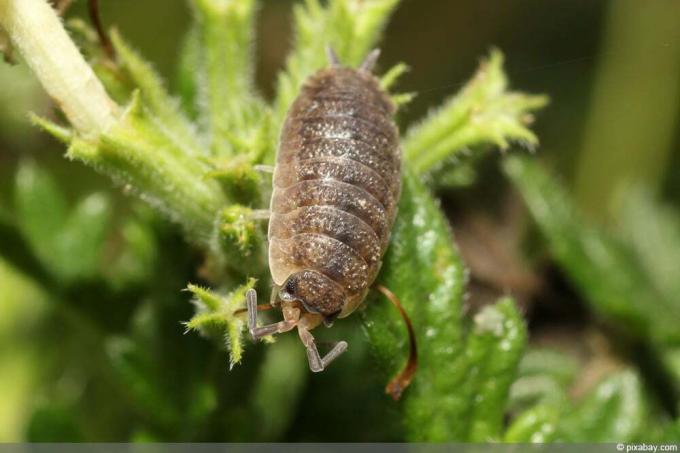

Table of contents
- Saltpeter - definition
- combat causes
- After eliminating the cause, drain the basement
- remove saltpeter
- Home remedies for saltpetre
- Injections to prevent neoplasms
If the walls in the basement are suddenly covered with a white layer, then it is usually saltpeter. This looks very similar to the white mold and is therefore often confused. Although saltpeter is only partially harmful to health, it should be removed immediately after detection in order to protect the masonry. How this can be done easily and quickly and what preventive measures should be taken is described in the following article.
Saltpeter - definition
Saltpetre, which often looks quite similar to the white mold on walls, is what is known as salt efflorescence. So saltpeter is not primarily harmful to health, but there is a great danger, especially for the building fabric of the house, if salt efflorescence appears. The reason for this is simple, as saltpeter on the walls usually shows up when the overall environment is too humid. A scratch test can be used to determine whether it is saltpetre on the cellar walls. To do this, proceed as follows:
- Saltpetre is made up of minerals
- the scraped parts crystallize after drying
- this is the salt
- Saltpeter on walls is mostly bright white
- Deposits on the wall mostly dry
Tip:
Mold on basement walls, on the other hand, is usually smooth and greasy, usually has a greyish color and gives off a musty smell due to the moisture that is still present.
combat causes
Saltpetre can appear on the walls, especially in the basement or other storage room, under various conditions. However, if these are known, the formation of saltpetre can be prevented from the outset. Because it usually makes no sense to just remove the substance from the walls as long as the cause of the If salt efflorescence persists, the saltpetre will also appear again and again and the masonry will continue due to the cause damaged. The following causes of salt efflorescence may exist and should be addressed:
- Saltpetre occurs only at a point to be limited
- The cause is usually a leaky water pipe
- can affect waste water as well as fresh water
- Expose the line and replace the leaking piece
- Downpipe on the outside wall is defective
- Often there is a leak in the area of the transition to the ground
- this is how the salt efflorescences in the basement develop on the outer wall
- Replace downpipe
- leaking terrace closure
- only a renovation of the terrace helps here

Groundwater or slope water that presses against the wall can also cause saltpetre on the walls in the basement. If this is the case, then only a specialist company can help, which has to dry the house from the outside in order to combat the salt efflorescence on the inside and to dry the masonry.
After eliminating the cause, drain the basement
Once the cause of the salt efflorescence in the basement has been found and rectified, only then can the saltpetre be effectively removed. However, before draining the basement, it is not advisable to start removing the saltpeter stains, as they will always reappear if the environment remains damp. Even after the cause has been eliminated, the basement walls are still damp and must be drained. This is done as follows:
- Ventilate the basement well for several weeks
- depending on the cause, this can take a very long time
- use a dehumidifier
- can also be borrowed from well-stocked specialist shops
- occasionally take moisture measurements on the walls
- if the walls are well dry, the saltpeter can be effectively removed
Tip:
If a specialist company has been commissioned to eliminate the cause, for example because groundwater has penetrated the masonry, then they can also take care of draining the basement.
remove saltpeter
It is usually more difficult to remove the cause of the salt efflorescence than to remove the saltpeter itself once the wall and room have dried out. Therefore, when working, you should proceed as follows:
- remove any salt efflorescence on the walls with a wire brush
- Wear long clothing, gloves and a face mask to protect yourself
- even if saltpeter is not harmful to health
- there is a lot of dust at work
- then mask off parts that are sensitive to acid
- These include, for example, window frames made of metal
- Apply commercially available saltpetre remover over a large area
- also wear protection
- Ventilate the room well during and after work
- After the exposure time, rinse the wall well with water
Tip:
In the case of a very strong infestation of saltpeter on the cellar walls, treatment with the commercially available remover is sufficient If the saltpetre does not fade or blooms again after the treatment, a specialist company may have to be hired become.
Home remedies for saltpetre
If, in the case of a small infestation, for example a defective drain pipe, the cause has been remedied and the basement wall dried through, then you can also use a home remedy to counteract the efflorescence that has formed become. Reference is often made to the power of cola. However, this should by no means be the light or zero version. Then proceed as follows:
- rub affected areas with the cola
- let soak for about ten minutes
- scrub off the saltpeter with a brush
- Then wash the wall thoroughly
- let it dry well again

Tip:
Cola has the advantage that no chemical vapors are generated in the cellar. The disadvantage here, however, is that residues on the wall from the sugar can be very unhygienic and could also attract more unwanted insects in summer.
Injections to prevent neoplasms
Once salt efflorescence has spread on a wall, it can reappear as soon as moisture rises from below in the wall. However, this can be prevented by injecting paraffin or alkali silicates directly into the masonry. If a company has been commissioned with the draining, for example because groundwater has gotten into the cellar wall, then they will also carry out the precautionary measure against new efflorescence at the same time. But the basement wall itself can also be protected from further moisture by injections. This should be done as follows:
- Knock off plaster, no moisture should get on the spots
- drill holes with a drill
- about ten centimeters above the ground
- ten to twelve millimeters in diameter
- an angle of inclination between 30 and 40 degrees
- five centimeters above the first row, the second row of drill holes
- clean holes with vacuum cleaner
- Pour sealant into holes with funnel
- let it dry and fill in the seal again
- Working time for this can take five to ten days
After the boreholes have been filled, they are sealed with sealing slurry. The wall surface is cleaned overall and can then be plastered.
Tip:
If the wall is very thick, if possible, drill from the inside and outside. This is usually necessary with a thickness of 50 centimeters and more. The drilling depth also depends on the thickness of the wall; in principle, a residual wall thickness of around five centimeters should remain.
 Home editorial office
Home editorial office
Learn more about Keller

Remove Basement Odor - With these 10 tips you can get rid of it everywhere
Cellar smell is unpleasant and musty. If objects or clothing have been stored in the basement for a long time, they also take on this penetrating smell. To avoid this, it is important to keep the basement room odor-free. If objects have been affected, they must be treated.

Storing & Cellaring Potatoes | 10 tips for storing potatoes
The potato is one of the most traditional vegetables in this country and can hardly be surpassed in terms of culinary variety. Anyone who grows them in their own garden can benefit from a huge variety of varieties and, if stored appropriately, can benefit from them for a long time.

Creating a light ditch in front of the basement window – design ideas
Building a light trench in front of a basement window yourself is not that difficult. If you follow a few basic rules and don't shy away from physical work, you can do it. Here you can find out what is important and what great design options there are.

Harvest and store potatoes correctly - in the refrigerator, apartment & cellar
Important criteria for harvesting and storage must be observed so that delicious potatoes from your own cultivation are on the table from summer until next spring. These instructions explain in a practical way when and how to harvest potatoes correctly and store them perfectly. The advantages and disadvantages of refrigerators, apartments and basements as storage areas are examined in detail.

Fight woodlice - natural remedies and home remedies
Woodlice are often referred to as pests, but they are very useful little creatures because they are the garbage disposal for everything that has died. Since they feed on all sorts of organic matter, they constantly seek out rotting fruit or vegetable debris, hair, skin, nails, dander, or wood.

When does the conservatory count as living space?
Whether and to what extent the conservatory is part of the living space is important for the calculation of the living space. The area can have a significant impact on the rental price or the applicable property tax. The basis used for the calculation is important. Here you will find all information on the subject.


